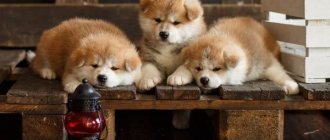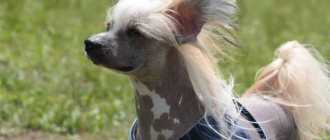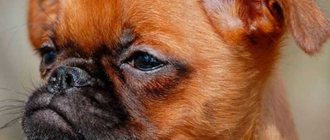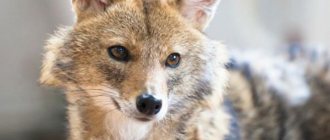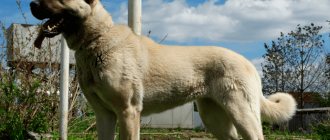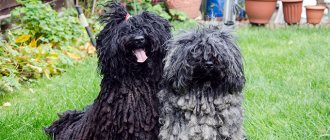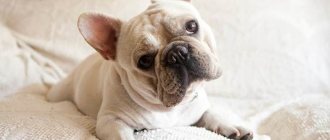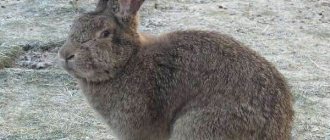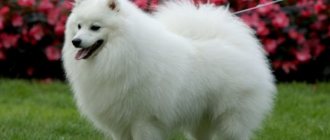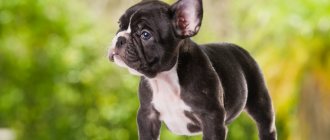Akbash is a breed bred for herding livestock. The dog has guard qualities. The animal will not abandon a lagging or sick sheep in trouble, thanks to a sense of duty. It has great strength and is not afraid to fight opponents. The dog makes his own decisions. With proper socialization, this breed becomes a reliable friend to the whole family. Akbash is clean and practically odorless, but despite this, it should not be kept in an apartment.
Origin
About 3 centuries ago, shepherds in western Turkey began to breed a breed that was characterized by a massive, muscular physique, the ability to protect itself, the owner and other domestic animals. There is an opinion that this color allowed the dogs to camouflage themselves and blend in with the surrounding area. Such tactical skills provided her with an undeniable advantage in the fight against predators, and the owner - an excellent opportunity to distinguish a pet from wolves.
Akbash is a Turkish herding dog. This also includes Anatolian and Kangal karabash, kars. The breed was not known until recently. In 1970, Judy and David Nelson became interested in her. It was they who began to import representatives of the species to the United States of America. In the country, the agricultural department became interested in dogs. Thanks to its endurance and strength, the Akbash was used as a herding dog.
Unfortunately, the breed has not yet been classified by the FCI. But in 1988 the International Canine Union and 1999 the United Kennel Club recognized this beautiful snow-white animal.
Content
It will not be easy for such a huge and energetic dog to live in an apartment. This means it will be difficult for her owner too. If possible, it is better not to have Akbash dogs in cities, with the exception of those cases when the owners have enough time and energy to constantly take care of their animal.
The dog will feel best outside the city, where he will have his own warm enclosure and a large area.
We must remember that, despite their unconditional devotion to their owner, these giants can be dangerous for strangers and other animals.
Turkish Akbash dogs should not be kept on a chain, otherwise the dog’s psyche will change and it will turn into an evil, uncontrollable creature. If you need to isolate an animal for some time, it should be taken to an enclosure and closed. A reliable fence around the perimeter of the site is also required.
Description
The Turkish breed has a luxurious, memorable exterior, proud posture and independent character. The animal is very courageous and strong. Representatives of the species have the following appearance parameters:
| Appearance | Characteristics |
| Dimensions | The dog's height at the withers can vary from 71 to 87 centimeters, and its weight is 41-60 kilograms. |
| Head | Massive and large, proportionally built. |
| Jaw | Powerful, scissor bite. |
| Ears | Triangular, hanging. The landing is low. Length about 10 centimeters. |
| Eyes | Medium size, brown color. |
| Body | The withers are well developed, the back is muscular and level. The croup is sloping with well-developed muscles. The breed has elastic skin around the neck, which prevents negative consequences from predator bites. |
| Paws | Long, smooth with pronounced muscles. |
| Tail | Long, fluffy. Rising above the back during movement. |
| Wool | Represented by double cover. The undercoat is soft and fine. The top protective layer is hard and long. On the muzzle, paws and ears it is shorter than on the rest of the body. The breed has two coat variations in length and waviness. The color is unchanged - snow-white. |
The four-legged pets of this breed are strong and flexible. Their endurance and power allow them to efficiently perform herding and guard functions.
Care
Grooming is something necessary for which we are responsible to our four-legged friends. Did you start it? Please, take care of him!
- Veterinary care is required
- The feeding is adequate and perfect. Just like a big working dog should,
- Keep it clean by brushing its double, coarse, white coat regularly.
Ancient dog breeds are distinguished by good immunity and good health. But they are alive, and nothing natural is alien to them. Monitor their health, prevent injuries if possible, feed them well, love them, and you can avoid problems.
Pros and cons of the breed
- smart;
- high intellectual abilities;
- excellent guards and companions;
- devotees;
- independent;
- ability to make decisions quickly and clearly;
- responsible;
- hardy;
- do not require special care.
- difficulties in training and education;
- dominant;
- need vocational training;
- ruthlessness towards opponents.
general characteristics
Abash is a tree that grows in the tropical forest. There are practically no thickets of “African oak”. The tree received this name because of its power and size. In addition, the tree is also called “African maple” due to the similarity of the leaves in shape to maple leaves.
Abash is found only in tropical forests. It grows up to 40 meters in height, and its diameter most often reaches 2.5 meters.
There are no knots on the trunk, since the branches of the crown grow only at the top. The giant is not afraid of the onslaught of the wind, because its trunk is supported by powerful disc roots up to 6 meters high.
You can recognize African abashi wood by its dull texture with shades of yellow.
Breed Features
At home, the flexible Akbashi gets along well with other pets. The animal treats strangers with caution, so you should not allow even strangers to appear on its territory. During a walk, representatives of the breed are neutral towards other dogs and cats, provided they do not pose a danger to the owner.
Akbash will not show aggression towards a stranger; they are used to keeping any situation under control. If the owner is friendly towards guests, the pet will retreat, but not far. This will allow you to protect your person in a timely manner in case of danger.
Another important advantage of this shepherd breed is its loyal attitude towards children. Representatives of the species never express aggression or anger at the child; they will tolerate pranks and will not allow themselves to offend the baby. This is not a natural character trait of the dog, but a consequence of proper training and socialization.
Raising a Turkish Akbash puppy
From the first days of communicating with an Akbash puppy, you should be patient and persistent.
You should constantly tell the puppy his name, wean him from bad habits (for example, climbing on a bed or sofa) and instill the necessary ones - to know his place in the house or apartment, unquestioning obedience to his owner.
Photo 5. Turkish Akbashi are smart and understanding
Active training of Akbash puppies usually begins when the puppy reaches 9-10 weeks of age.
It is better to involve professional dog handlers in training who are able to properly organize the process of developing watchdog qualities in these dogs.
Turkish Akbashi will be happy to learn more and more new lessons, trying to become real helpers.
These are smart animals that, with the right approach, easily remember new commands.
Starting from the first days, the education of Akbash will continue throughout their lives.
Nutrition
Basically, the diet for representatives of the breed does not differ from the nutrition program for other large dogs. Akbash can be fed natural food or balanced dry food. It is permissible to feed the animal:
- meat (raw or slightly boiled);
- porridge (oatmeal, buckwheat, rice);
- vegetables;
- fruits;
- low-fat fermented milk products;
- sea fish;
- vitamin and mineral complexes;
- bone meal;
- fish oil.
Prohibited products:
- milk;
- sweets;
- flour products;
- smoked dishes;
- confectionery;
- pickles.
Veterinarians do not recommend a combination diet. The combination of feed and natural food can lead to gastrointestinal imbalance.
Premium dry dog food
Rating
Holistic dog food
Rating
Small breed dog food
Rating
Choosing a nickname
When you are planning to purchase a purebred dog, you need to use the existing rules for selecting a name for a puppy. These three rules are used and followed by breeders of all purebred dogs.
First rule
The names of all puppies from the same litter, both females and males, must begin with the same letter. This letter is usually chosen by the management of the club or nursery. For example, there are 6 puppies in a litter - three females and three males. They are given the following nicknames starting with the letter “M”: Monica, Miley, Matilda, Mark, Max, Michael.
Second rule
The nickname must contain one of the letters contained in the name of the nursery; as a rule, this is the first letter of the name of the nursery.
Frequent diseases and problems
Although this breed is considered strong, hardy and healthy, they are prone to a number of difficult diseases. These include:
- obsessive-compulsive disorder;
- ulcerative colitis;
- epilepsy;
- renal failure;
- umbilical hernia;
- hip dysplasia;
- cardiomyopathy;
- atopy;
- gastric volvulus;
- hypothyroidism;
- lymphoma, osteosarcoma;
- seborrhea;
- joint inflammation.
Despite the fact that the Akbash is classified as dangerous in many countries, four-legged pets are infinitely affectionate towards household members and family friends. They will never show aggression towards children, elderly people and their own owners. Of course, to get an obedient and devoted friend, you will need to make a lot of effort, gain trust and prove your love to the animal. But in the end, the Turkish Akbash will be a devoted, faithful companion and protector.
Greyhounds - a twice famous breed
Greyhounds are not only known as the fastest dog breed, capable of reaching speeds of up to 72 km/h, but also as the only dog breed mentioned in the Bible (referring to Proverbs 30:31; King James Version).
Dogs' paws sweat
It turns out that dogs sweat too. But while humans sweat through the skin all over their bodies, dogs sweat through their paws. You can verify this by watching your dog on a hot summer day. A characteristic symptom will be a salty odor, reminiscent of popcorn or corn chips.
The homeland of the French poodle is not France.
The homeland of the poodle is Germany. The name "poodle" is derived from the German "pudel" or "pudelhund" and means "splashing dog." The world-famous haircut of poodles appeared when hunters cut their hair for ease of swimming, leaving only a little fur to keep warm.
Prices for Turkish Akbash puppies
Finding a purebred Turkish Akbash puppy is not easy. Turkey is still considered the center of breeding of these dogs, where the path is prohibited for many of our compatriots.
Photo 6. Cute Turkish Akbash puppies
In Russia there are nurseries where Turkish Akbashi are bred, but there are not many of them. Because of this, prices for Akbash puppies vary between $200-$400.
When purchasing a purebred puppy, be sure to read the pedigree and accompanying documents.
Turkish Akbash dogs (especially their puppies) are very similar to Central Asian Shepherd Dogs, which is why beginners may make mistakes in identifying the breed.
Turkish Akbash can only be white. No spots on sides, tail or paws. Based on these signs, you can immediately reject proposals that differ from the standard.
Video about Turkish Akbashi:
Story
Until the second quarter of the 19th century, on the territory of the modern village there was a family village of the Tlostanov princes, who were one of the rulers of Lesser Kabarda. After the fall and final annexation of Kabarda to the Russian Empire in 1825, the Tlostanovs moved beyond the Kuban to continue the war with other Circassians there against the tsarist troops, and the village was abandoned.
In 1885, the warrior Gudaberd Astemirov and his people moved here. This year is officially considered the founding date of the modern village.
In the works of V. Beslaneev, S. Beytuganov, J. Kokov, A. Musukaev and other historians there is enough information about Little Kabarda, and in particular about the village of Astemirov. But these documents and facts are scattered and sometimes difficult to find.
In the first half of the 19th century, Astemirovo was located at the confluence of the Kurp River with the Terek (“Explanations for the map of S. Chichagov”).
On the map of the settlement of Kabardians from 1842 it is indicated that on the right bank of the Kurp River there are auls: Prince Bekovich-Cherkassky and the nobles Khaptsev, Astemirov, Inarokov.
In 1863, by decision of the royal commission, the villages of Khaptsevo, Azapshevo, Inarokovo, Astemirovo and others were evicted from the lands purchased from the princes of Bekovich-Cherkassy (from the right bank of the Kurp River to the left).
In 1885, the village of Gudaberd Astemirov moved to its current location, just above another village of the Astemirovs (now Nizhny Akbash) and is recorded in Russian documents as the village of Verkhnee Astemirov.
In 1920, with the final establishment of Soviet power in Kabarda, by the decision of the Revolutionary Committee of the Nalchik District, all Kabardian settlements were renamed, due to the presence of princely and noble families in their names. As a result, the village of Astemirovo received its new name - Upper Akbash.
In 1928, the Akbash hydroelectric power station was built, which went down in history as one of the objects of the GOELRO plan signed by Lenin.
During the Great Patriotic War at the end of 1942, the village was occupied by German troops. In December 1942, to the east of the village, one of the bloodiest battles on the territory of the KBASSR and the Caucasus took place - the Battle of the Kurp Heights, during which German troops were stopped and a large-scale liberation of the KBASSR from the fascist invaders began. In memory of those who fell in battle during the liberation of the village and the villagers who died on the war fronts, monuments were erected in the village.
In 1963, during the transformations in the municipal areas of the KBASSR, the village was administratively subordinated to the lower-lying settlement of Zavodskoye.
Population
| Population | |
| 2002 | 2010 |
| 2685 | 2661 |
National composition
According to the 2010 All-Russian Population Census:
| People | Number of people, people | Share of the total population, % |
| Kabardians (Circassians) | 2 650 | 99,6 % |
| other | 11 | 0,4 % |
| Total | 2 661 | 100 % |
Gender and age composition
According to the 2010 All-Russian Population Census:
| Age | Men, persons | Women, persons | Total number, people | Share of the total population, % |
| 0 – 14 years | 294 | 265 | 559 | 21,0 % |
| 15 – 59 years | 867 | 888 | 1 755 | 66,0 % |
| from 60 years old | 132 | 215 | 347 | 13,0 % |
| Total | 1 293 | 1 368 | 2 661 | 100,0 % |
Men - 1,293 people. (48.6%). Women - 1,368 people. (51.4%).
The average age of the population is 33.7 years. The median age of the population is 30.6 years.
The average age of men is 32.1 years. The median age of men is 29.6 years.
The average age of women is 35.3 years. The median age of women is 32.0 years.
